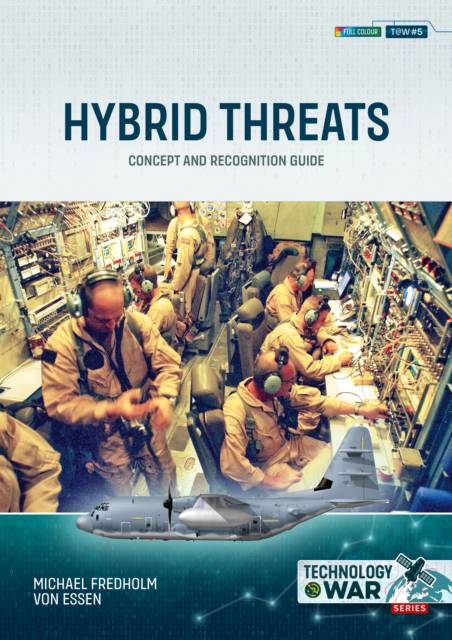
- Afhalen na 1 uur in een winkel met voorraad
- Gratis thuislevering in België vanaf € 30
- Ruim aanbod met 7 miljoen producten
- Afhalen na 1 uur in een winkel met voorraad
- Gratis thuislevering in België vanaf € 30
- Ruim aanbod met 7 miljoen producten
Zoeken
Omschrijving
"...author Michael Fredholm von Essen, did an admirable job of defining a nebulous threat that is hard to recognize, much less counter." - IPMS/USA
Hybrid threats embody a mixture of violent, coercive and non-violent means in order to enable state and non-state actors to achieve their ends. The concept of hybrid threats has in recent years become an integral part of the security and national security policies adopted by the European Union (EU), North Atlantic Treaty Organization (NATO), and indeed most Western countries. The concept also frequently appears in headline news. Yet, military intelligence services and security services seem unable to agree on how to define the phenomenon, or on how to take efficient countermeasures against them.
In this important work, the author examines the rise of hybrid threats in the post-Cold War environment and provides extensive examples of the nature of the threat and case studies of how hybrid threats have been employed by state and non-state actors.
Hybrid threats embody a mixture of violent, coercive and non-violent means in order to enable state and non-state actors to achieve their ends. The concept of hybrid threats has in recent years become an integral part of the security and national security policies adopted by the European Union (EU), North Atlantic Treaty Organization (NATO), and indeed most Western countries. The concept also frequently appears in headline news. Yet, military intelligence services and security services seem unable to agree on how to define the phenomenon, or on how to take efficient countermeasures against them.
In this important work, the author examines the rise of hybrid threats in the post-Cold War environment and provides extensive examples of the nature of the threat and case studies of how hybrid threats have been employed by state and non-state actors.
Specificaties
Betrokkenen
- Auteur(s):
- Uitgeverij:
Inhoud
- Aantal bladzijden:
- 72
- Taal:
- Engels
- Reeks:
Eigenschappen
- Productcode (EAN):
- 9781804518809
- Verschijningsdatum:
- 15/11/2025
- Uitvoering:
- Paperback
- Formaat:
- Trade paperback (VS)
- Afmetingen:
- 206 mm x 295 mm
- Gewicht:
- 299 g

Alleen bij Standaard Boekhandel
+ 55 punten op je klantenkaart van Standaard Boekhandel
Beoordelingen
We publiceren alleen reviews die voldoen aan de voorwaarden voor reviews. Bekijk onze voorwaarden voor reviews.








